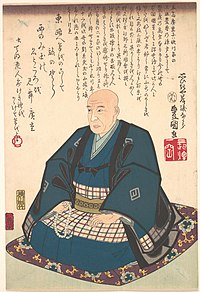When we talk about Ukiyo-e artists, Without talking about Hokusai, previously we have shared his life in our blog and Utagawa Hiroshige, Nothing will start. “Autumn is seasons of … series will be continued its topic for Art and mainly discovering the life of Hiroshige. Let’s enjoy the journey of his life with us.
Struggling childhood
Average life span during the Edo period(1603-1867) was approximately half of today’s figure. People died from easily curable diseases while crime and natural disasters were also a great factor. Utagawa Hiroshige was born in 1797. At the age of 13, Horoshige’s mother passed away and his father retires from his position. And Hiroshige immediately succeeded in his father's position however, the same year, his father also passed away. He made the decision to quit his father’s post as a fire warden and devote his time solely to painting and pursued a career as a painter full-time.

Source: Hiroshige, Kingfisher and Irises
Hiroshige showed a remarkable talent for painting from an early his age, and at age of 15, he requested an apprenticeship to Utagawa Toyokuni. He was refused and began his studies under Utagawa Toyohiro. Hiroshige is known for depicting landscapes, however, he mainly depicted flowers and birds at his early career.
What is unique about Ukiyo-e comparing Western art?

Unique aspects of ukiyo-e prints is its “Bird’s-Eye View” composition. Hiroshige extensively used this overlooking perspective especially in his “Hundred Famous Views of Edo”. Perhaps the reason why western art never saw the use of this “Bird’s Eye View” was for religious reasons. The Idea of overlooking scenery from the high skies resembled God’s power. It can be said the advent of perspective in western art ran parallel with man’s understanding of his/her place in the world.
Hiroshige blue

Source:Hiroshige, New Year's Sunrise with Snow at Susaki
One defining characteristic of "Famous Places of the Eastern Capital" is the abundance of the color blue. This coloring later became known as "Hiroshige blue" in Europe, and stands as a signature of Hiroshige's paintings. The paint, imported from Germany, was known as "Berlin Blue." and was commonly utilized by artists in the West.
Hiroshige and Vincent van Gogh

Vincent van Gogh was Dutch painter born in 1853. He spent much of his career in Paris. Three years after Van Gogh’s birth, Hiroshige began producing his last great work “Hundred Famous Views of Edo”. In 1855, the Paris World Expo introduced Japanese art to the West for the first time.

Source: Le Pere Tanguy, Musee Rodin
Van Gogh was particularly struck with the simplistic beauty of Ukiyo-e prints. With support of his brother, Vincent van Gogh collected hundreds of prints and reproduced three Ukiyo-e prints on oil paints. Hiroshige was his favorite Ukiyo-e artist is evidenced by the fact that he saw the landscape of southern France through Hiroshige's eyes.
Hiroshige’s contribution
The production, starting in 1833, “ Fifty-three stations of the Tokaido” was a huge hit. Hiroshige was established, for the rest of his life, as the most illustrious creator of landscape images. Until his death at the age of 62 in 1856, he lived to become one of the most important Ukiyo-e artists of the late Edo period. Throughout his life, Hiroshige produced over 1500 scenic prints. His "Sixty-Nine Stations on the Kisokaido Road", "Fifty-three Station on the Tokaido Road" , and "Hundred Famous Views of Edo" are considered to be his three most important works.
How was this week of our blog? We hope you have enjoy the Hiroshige's life, his related artist, Van Gogh, and unique aspects of Ukiyo-e. We hope you have wonderful Autumn with arts.


